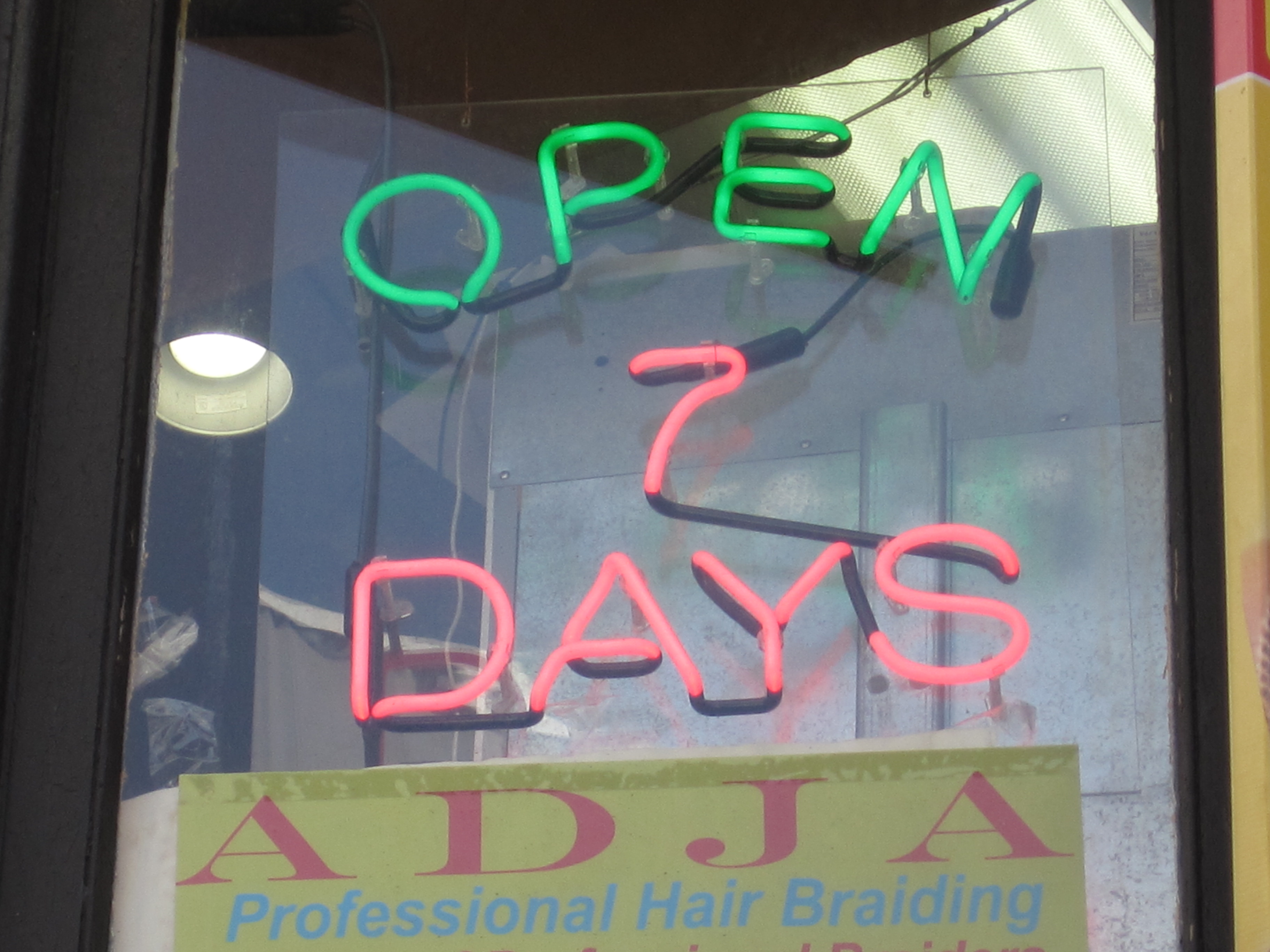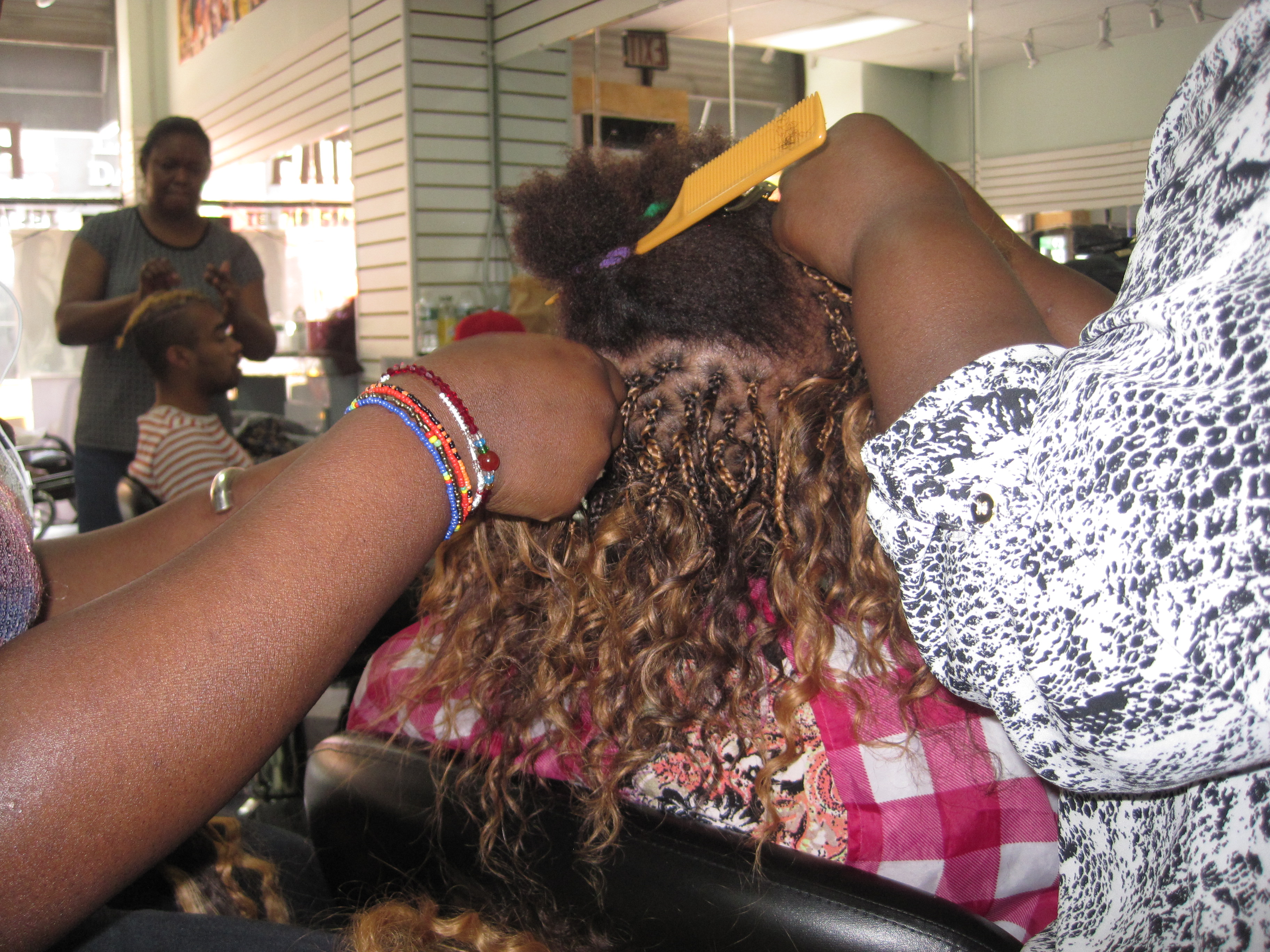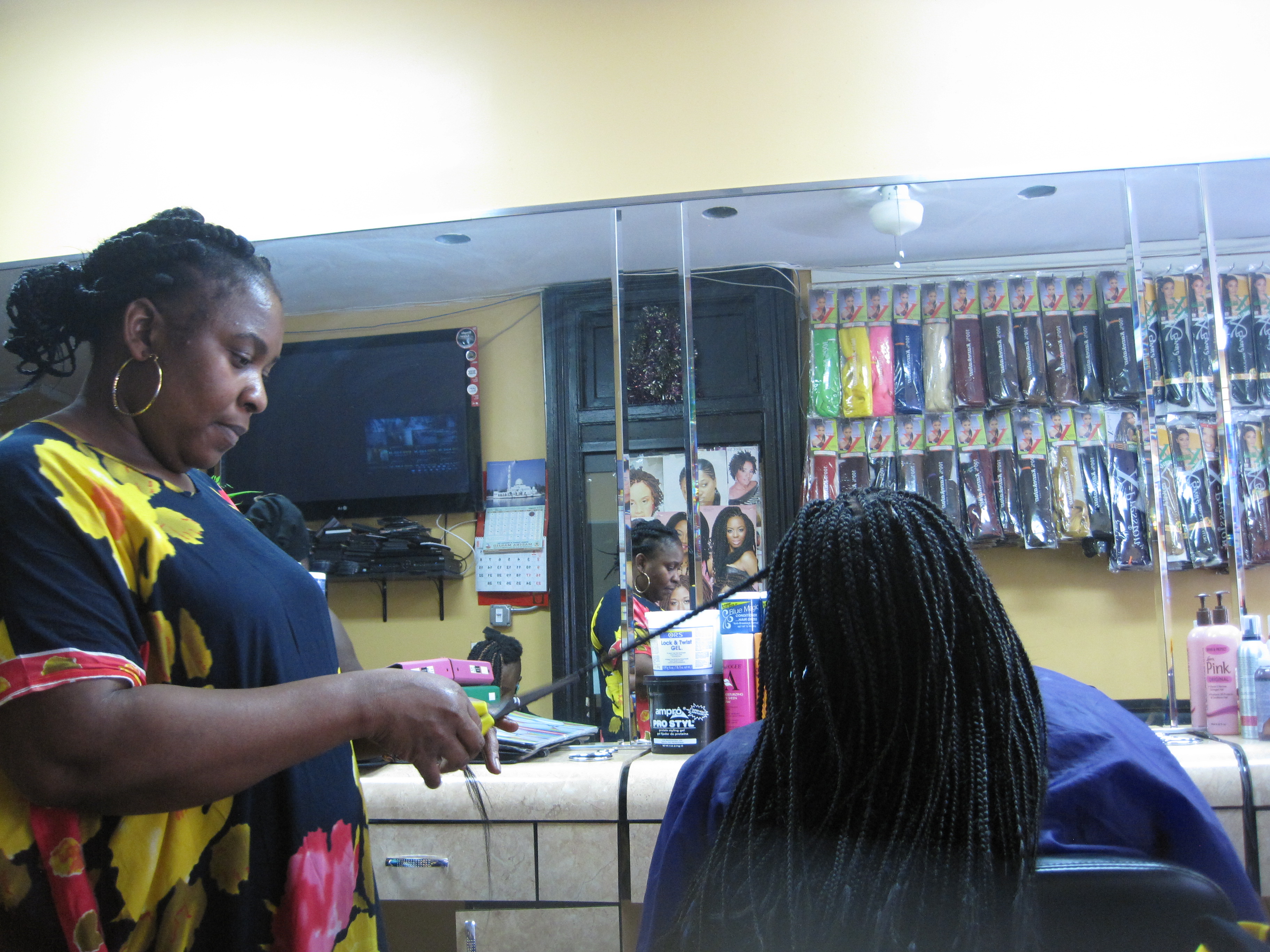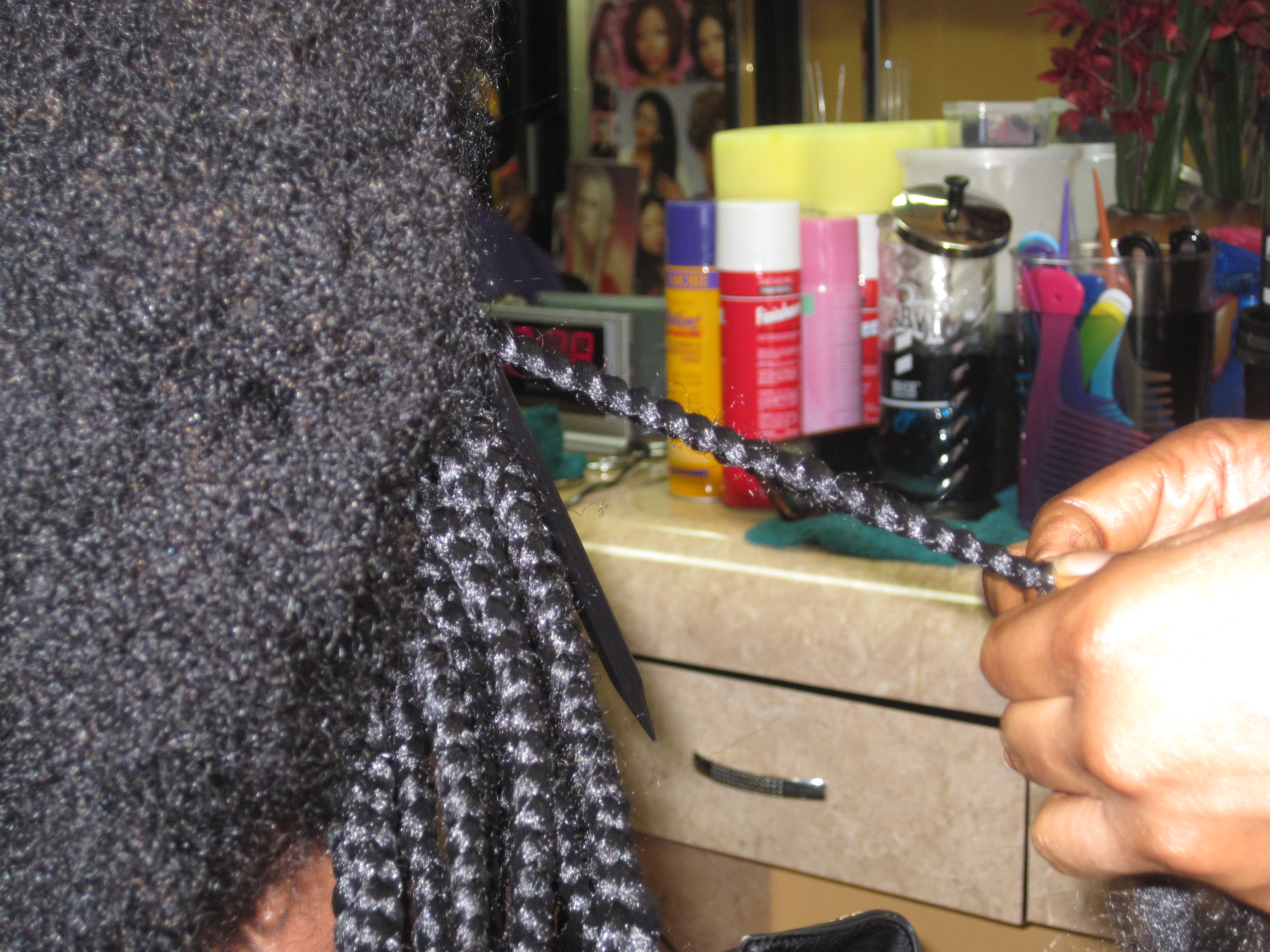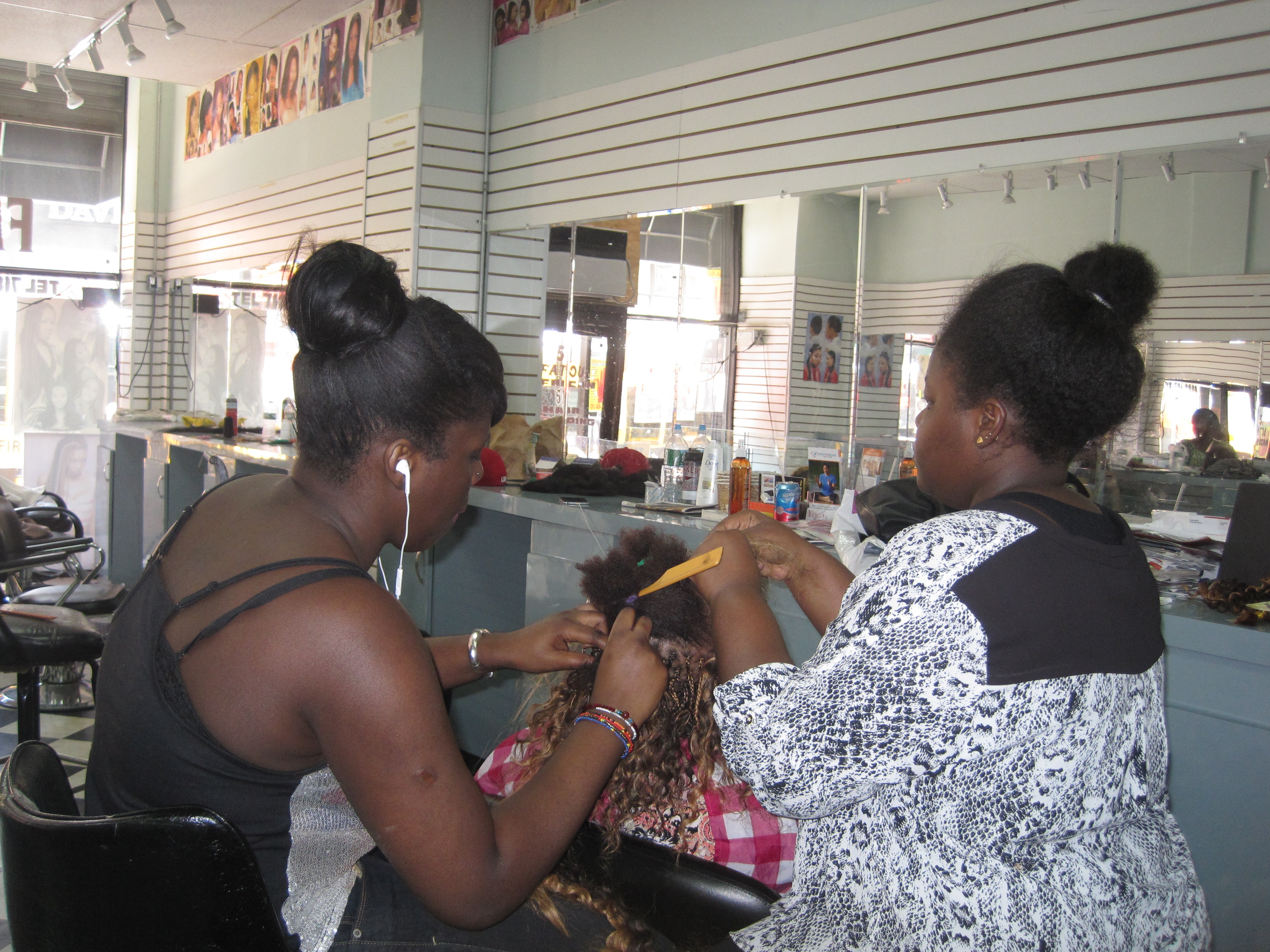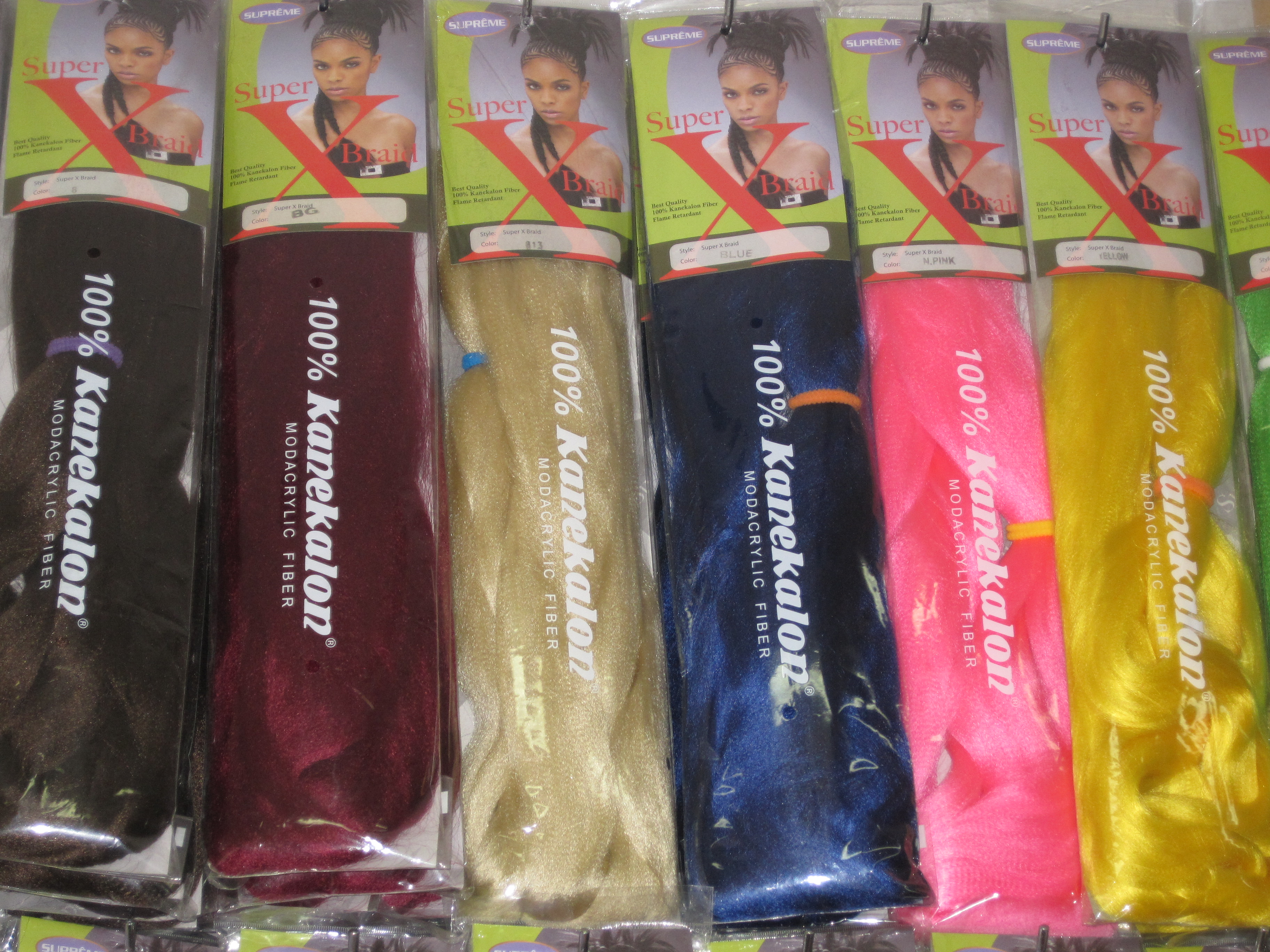Every morning at 9am, 19-year-old Kaida arrives at her mother’s hair braiding salon in Brooklyn not knowing whether she’ll leave until 8, 9 or even 10pm when the last customer will step out the doors with a tight head, full of glossy braids.
This is a typical day for many African hair braiders in New York City. The fashion press is often too quick to portray braiding as a care-free and rosy affair that’s in style one moment and out the next. But rarely do readers get a glimpse into the monotonous workday of braiders that have fulfilled black women’s desires for low-maintenance, expertly-done plaits for decades.
With nimble fingers, braiders toil away for hours on end, pulling, moulding and shaping kinky hair into a myriad of styles – from cornrows and micro-braids to Senegalese twists, Marley twists and the ever-popular box braids. The reasons for which the braiders chose the profession are ambiguous. For many it wasn’t an explicit career choice but something they fell into by taking after their mothers.
‘My mum used to bring me when I was younger to the shop,’ says Kadia, whose mother, Fatou, owned a different salon for 16 years before opening Fatou African Hair Braiding three years ago. Kadia learned the craft by braiding the hair on mannequin heads.
‘I used to copy what my mum would do,’ she says.
The uncertainty of work hours and random overtime stems in part from the nature of the profession.
About eight other stylists work alongside Kadia in her mum’s salon. Most are from West Africa, including Senegal and Guinea. With backs hunched they set straight to work, parting the customers’ hair into sections and applying a dab of gel before grabbing on for dear life and weaving the extensions in at the root.
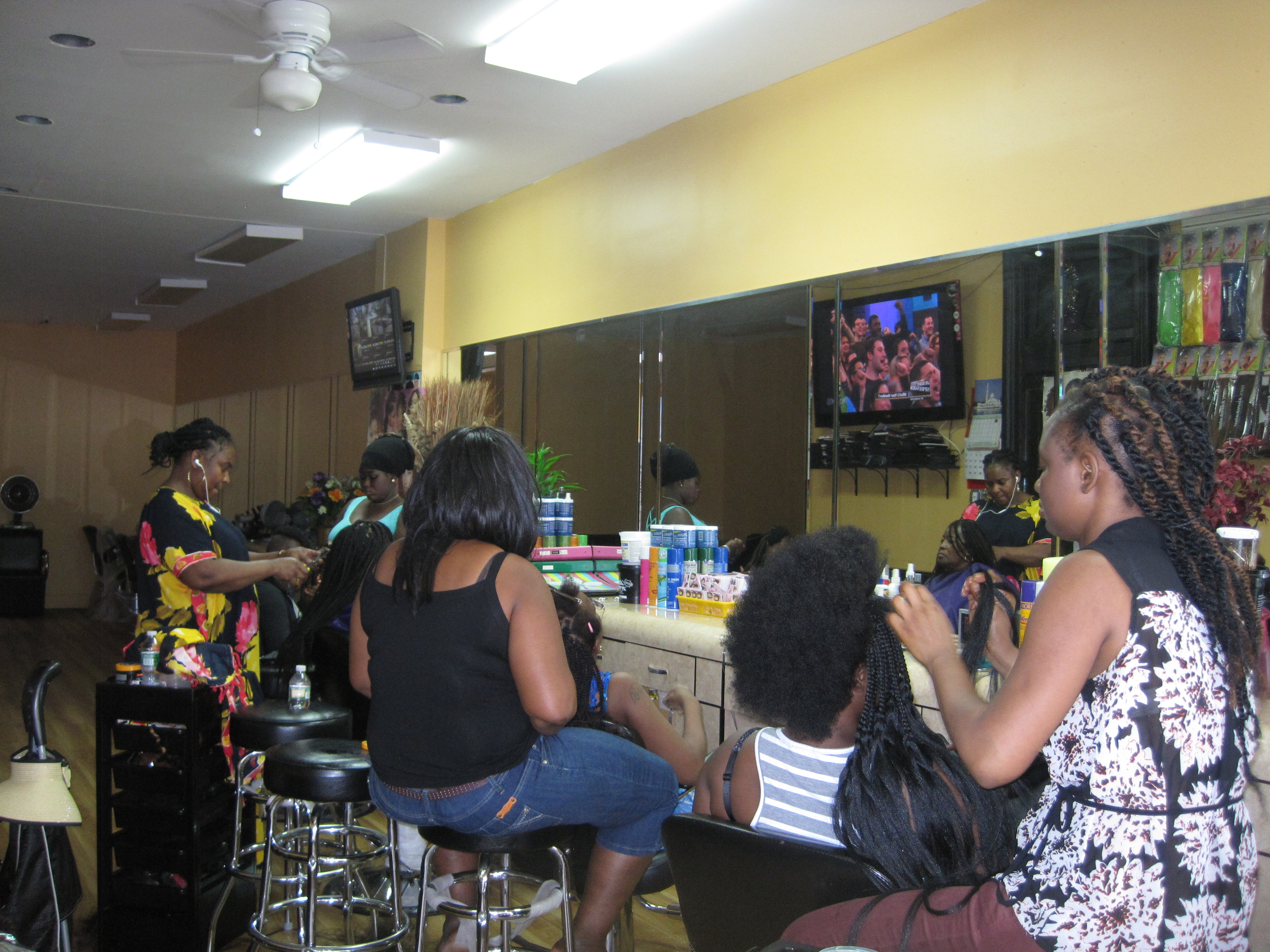
Hour after hour, the women perform an awkward dance of sitting then standing then sitting again. Hour after hour, knotty strands of discarded hair piles up on the floor.
Do they ever suffer back pain? ‘Once in a while,’ Kaida says as she rubs her shoulder.
Over at Adja Hair Braiding in Brooklyn – a braiding salon hub second only to Manhattan’s Harlem neighborhood – employee Awa is no stranger to exhaustion. She gets tired ‘all the time,’ the Burkina Faso native says in accented English as she runs a needle and thread to hold a woman’s braided bun in place. The 22-year-old learned to braid on her ‘poupée’, the French word for doll.
Awa agreed to speak on the condition her real name not be used. She arrives at 9 in the morning and usually ‘takes lunch’ at 2pm. But if things are hectic lunch is delayed until 5.
Like Kadia, Awa doesn’t know if she’ll go home at half past seven, the cut-off time when they accept the last customer. For the braider, that sometimes means an additional six hours of labour tacked onto a 10-hour workday.
‘Sometimes we don’t leave until 11pm or 2am the next day,’ says Awa, whose only day off the week is Monday.
The uncertainty of work hours and random overtime stems in part from the nature of the profession. Box braids, for example, take an average of six to eight hours to complete depending on the customer’s desired length and how much hair she has.
Except for the occasional Monday off, Adja works seven days a week.
‘You OK, ma’am?’ Adja, who owns Adja Hair Braiding, asks a woman she’s finishing box braids for with long extensions. The process takes five hours and comes out to US$140, a common price for this type of style. ‘Almost [done] OK,’ Adja tells her.
Adja is from the Ivory Coast. She opened her Brooklyn salon five years ago but has been braiding for 27 years. Except for the occasional Monday off, Adja works seven days a week. She says she never gets tired and that her back never hurts.
‘It’s my job. that’s why I like it.’
Box braids – named so because the hair is parted into a box shape before braiding, and cornrows, which run flat against the scalp, first appeared in ancient Egypt and Nigeria over 3,000 years ago. Women of the Mende ethnic group, now prevalent in modern-day Sierra Leone, adorned their heads with cornrows divided into intricate geometric patterns and shapes.
A person’s ethnicity, age and social rank were based on the braids that adorned their heads, much like the Mangbetu women of central Africa whose iconic cone-shaped hairstyles denoted the ruling class. Back then, braiding wasn’t so much a profession but a bonding experience between mothers, daughters, aunts, nieces and friends.
Nowadays things have changed. Braiding is a paid endeavour, albeit not a highly-paid one. Kadia says braiders at her mother’s salon get paid a weekly salary – no matter how many ‘heads’ they braid or how many hours are put in.
Newbies start at US$300 a week, around US$1200 a month and everyone keeps their tips. The rate increases over time ‘based on what styles they know how to do,’ says Kadia, who earns up to US$400. Even with Kadia’s US$400, the yearly amount is decidedly less than the annual mean wage of US$29,030 that hairdressers and hairstylists make in New York state, according to 2014 estimates from the Bureau of Labor Statistics.
As far as Adja’s employees are concerned, Adja declines to say how they are paid. She also does not elaborate on how much goes into buying supplies like gel, mousse and synthetic hair for her salon.
‘It depends,’ she says.
Up the block from Adja’s salon is Mama Senegalese Hair Braiding, where Maty, the owner’s 21-year-old daughter, sits on a stool doing yet another set of box braids while the movie Twist of Faith starring Toni Braxton plays on TV.
Two women are getting their hair braided in front of three gilded mirrors on top of a long dresser. What appears to be a broken sink sits against the wall on the right. On the left, a stylist repeatedly pulls strands of synthetic hair through her fingers. This is done to make the hair smooth, she says.
The reasons why these women braid may be obscure. But for the customers it’s clear.
It’s not clear why Maty likes braiding. ‘I don’t know,’ the Senegalese-native says, laughing. She shrugs her shoulders and says she got into braiding through her mother. ‘I was here every day,’ Maty says.
Maty’s co-worker, Natifa, taught herself to braid by practicing on her own hair. But the 22-year-old, who’s been working at Mama’s for less than a month, can’t say why she’s drawn to it.
‘I don’t know really. I’m not too sure,’ Natifa says as she wipes beaded sweat from her brow while working on a customer next to Maty. Natifa is American, a rarity among hair braiders in New York.
The reasons why these women braid may be obscure. But for the customers who sit on their bottoms for several hours straight all in the name of beauty, the why is crystal clear.
‘It’s easier, I can get up and go,’ says Adja’s customer Ramona Grant, referring to the minimal time she spends doing her hair in the morning. The last time she had a perm, her hair fell out. She also used to wear a glue-in weave. It left her with bald spots.
‘I don’t like chemicals, weaves, wigs… ’ says Grant, who gets red-tinted kinky twists.
Sitting next to her is Brooklyn native Angie Felder, who just paid $60 to get Ghana braids styled by Awa. She asks Awa how long she can keep the style, large cornrows leading up to a top bun. The stylist suggests one month.
Felder usually gets cornrows in the summertime. ‘I like cornrows period,’ says Felder. The school bus driver has been getting cornrows ever since she was a child. So perhaps she knows better than anyone that the style is nothing new, as magazines like Marie Claire have taken heat for claiming in the past.
‘It ain’t no new trend!’ Felder says. ‘It comes from us.’
But does Kadia want any part in carrying on the centuries-old art form with her own braiding salon?
‘I don’t think so,’ says Kadia, who is working in her mother’s salon until she returns to college to study business management. ‘It’s too much work.’

